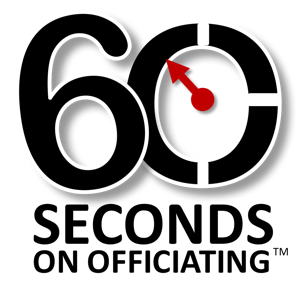
Freedom of Movement
NFHS updates how officials should handle these situations.
“I move, therefore I am.”
The words of noted Japanese author, Haruki Murakami, likely had no influence on the NFHS Rules Committee who penned the rule #10-6-12, but the governing body surely believes that freedom of movement on the basketball court is critically important to our great game, and they put forth substantive guidelines to ensure that it comes about with the start of the 2014-15 season.
Somewhere along the officiating timeline, the dial on permissible contact between between offensive and defensive players was turned up a few notches and what officials saw as illegal contact was now being filtered through the lens of “advantage-disadvantage.”
The practice of ignoring illegal defensive contact because the offensive player could hold his/her ground and be unaffected by the physical pressure, slowly but steadily, upped the ante, and skill was being stunted by strength.
NFHS Rule 10-6-12 is the new sheriff in town and he’s here to clean things up…
The guidelines of the new rule have been explained to both players and coaches, and officials have been put on notice they will be held accountable for ruling on the illegal contact, early and consistently throughout the game.
So, the defensive contact on a ball handler or dribbler that is to be ruled a foul is:
- Placing TWO hands on the player.
- Placing an extended arm bar on the player.
- Placing and keeping a hand on the player.
- Contacting the player more than once with the same hand or alternating hands.
While the defender’s torso is not specially mentioned in the new rule, you would be consistent to rule a foul on a defender who ‘rides a dribbler’ coming up the floor or who is driving to the basket, or who repeatedly ‘body bumps’ a player holding the ball.
The early feedback from coaches and players on the enforcement of Rule 10-6-12 is quite encouraging and should dampen any misgivings officials have about the new rule leading to a steady stream of disqualifications and a parade to the free throw line.
The reality is that players and coaches, by and large, are making the necessary adjustments to their style of play and game planning and they are accepting the consistent enforcement with not much complaining.
At the end of the day, coaches, players and likely spectators, want a game that allows athletic skills to flourish at both ends of the court, and not have them thwarted by illegal contact delivered with brute strength in the guise of ‘false hustle.’
Rule 10-6-12 gives the participants what they want, and the the officials the mandate to help transform the game…
This will require a collective effort from all officials across the board. What you call today may not,”echo into eternity,” but it will certainly carry over into the two teams’ next games.
Don’t make it harder for the crew that follows you and have them be subjected to the protests of coaches and players loudly proclaiming, “that wasn’t a foul in my last game!”
Making the rules is above our pay grade. We are paid to enforce the rules consistently, without injecting our personal bias on the merits of any rule changes or points of emphasis.
Embrace rule 10-6-12 and be a part of the positive change that elevates our great game.

I believe110% on the NFHS on rule #10 -6-12, we should enforced those rules from the very beginning so the players and coaches could adjust to those rulings.
Have been calling this in the pre-season and makes for a much cleaner game.
You must remember that it goes for the offense also.
Teams will still be getting used to it , so we have to call it from second 1 !
As teams come out properly coached to avoid these 10-6-12 fouls, be ready for more RSBQ fouls, especially out top on the perimeter. Contact with the hands is being replaced with contact with the body as defenders attempt to attain LGP to thwart dribblers’ directional progress. Some of that contact will be legal, leading those who focus on the defender in the competitive matchup to call legitimate PC foul calls. Other contact will be illegal, resulting in blocking fouls.
At least that’s what we’re discovering two games into the season.
The most important sentence in this article is, “This will require a collective effort from all officials across the board.”
In a scrimmage, I found myself calling 4-5 fouls to enforce Rule #10-6-12, while my two partners called ZERO, in spite of it being discussed during our pre-game.
I do agree, the coaches have “bought into it”, but old (bad) habits are hard to break (for players). But they’ll catch on quick when they find themselves riding the pine in the 1st quarter with two quick ones.
Better read rule 4-24 Article 3 before you fall in love with calling fouls under this “new” rule which is just hand checks gone wild. So far I have seen three baskets taken away from the offense because of calling a hand check while the offensive player is going to the basket. Rule 4-24-5 notes it is not legal to use hands that inhibit freedom of movement. If the offensive player is not inhibited by the contact, why then penalize the offensive player by taking away the basket. That’s where advantage/disadvantage comes in. Maybe the rules makers should watch some games instead of causing more interruptions in a great game so we can call “touch fouls.”
If pick up our five second count sooner that for sure will help.
It’s about time we started calling these fouls. Nothing new here. It will clean up the game. Now maybe we can start calling the jump-stop correctly instead of letting players travel right to the basket. We get that wrong 90% of the time.